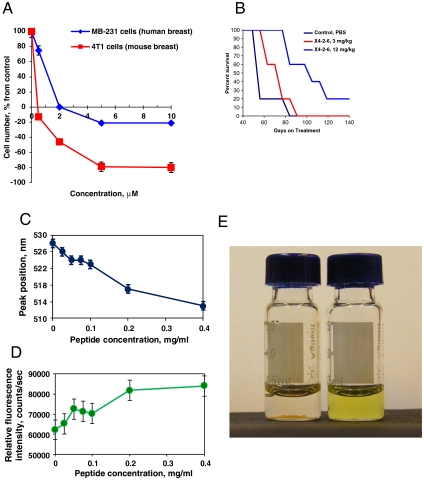Fig. 4.
Self-assembled particles formed by the CXCR4 TM2 derivative have intrinsic anti-CXCR4 activity in vitro and in vivo and can encapsulate hydrophobic drugs. (A) Nanoparticles formed by X4-2-6 inhibited growth and killed human and mouse breast cancer cells grown in the presence of SDF-1α in serum-free medium. (B) X4-2-6 prolonged survival in a mouse model of metastatic breast tumor. Nude mice were injected with MDA-MB-231 breast cancer cells intravenously. Intraperitoneal treatment with X4-2-6 was started the day following the injection of cancer cells and was given every 3 d thereafter. (C, D) Change in environment-sensitive fluorescence spectra of an imidazoacridone drug upon mixing with nanoparticles demonstrates drug incorporation into nanoparticles. (C) Emission peak position; (D), emission peak intensity. (E) Self-assembling peptide nanoparticles solubilize hydrophobic anticancer agents. Comparison of HKH-40A forming a precipitate in PBS (Left) and a clear X4-2-6/PBS solution (Right).

